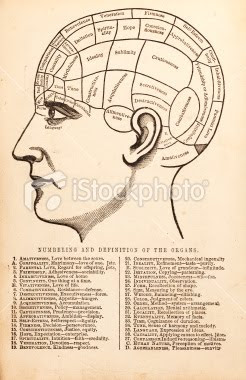The Arts University College At Bournemouth
Learning Agreement
Name: Victoria Yates
Course: BA Illustration
Level: 5
Unit: Convergence/ Divergence
Unit Code: Ill515
Credit Points: 45
Study Hours: 450 hours
Tutor(s): Sharon Beeden
Synopsis of study
When considering the possible approaches for this unit, I looked upon my interest of the world, science and technology and more specifically geology. Having looked at synonyms for convergence and divergence I found some words that stuck out: merge, mingle, separate, split and spread. This has led me to look into how the earth is formed and sustained by continuous destruction and renewal.
My visual outcome for this unit will be a title sequence for the BBC documentary series: Earth – Power of the Planet. This series is split into 5 episodes: Volcano, Atmosphere, Ice, Oceans and Rare Earth. There are many themes tackled in this documentary one of which is the impact humans have had on the planet. With there being so much information and visuals to draw inspiration from, I’m hoping for an exciting and vibrant outcome.
“Audience involvement should begin with the first frame”
Saul Bass (2004)
Researching into the title sequences produced by Saul Bass has inspired the direction of this project; I believe that this could be a viable platform for my animation in relationship to my practice, in that in the future there is a possibility that I would want to become more focused on educational illustration or editorial. Creating a piece of moving image will allow me to realize the potential of my illustration practice, moving it forward.
Title sequences are more prominent in the film industry but I think a title sequence for a documentary would work well because it will give an overview of the series and a taster of what is to come while keeping the viewer intrigued enough to want to continue to watch the rest of the documentary. Title sequences need to
“Create a climate for the story to unfold” and to “ Set the stage symbolically for what is to come”.
Saul Bass (2004)
I will need to think about the target audience during this process and maybe generate questionnaires to find out what different age groups prefer, style, sound etc.
I will produce the animation in After Effects, utilizing Photoshop skills learnt in previous units. As part of my creative process I will gather ideas through taking visual stimulus from the documentary and gathering key phrases to inspire me.
Using newly learnt skills in After Effects will make me more aware of other contexts in which illustration can be shown, allowing me also to create something new and innovative.
Aims
A1 To provide an awareness of how screen-based technologies are transforming the way that audiences are consuming information how Illustration can enhance a specific concept and effect a target audience.
A2 To develop my creative solutions and skills in relation to the technology available to illustrators towards a screen based presentation.
A3 To inform my creative ambitions with career planning within the digital/technological and inter-active industries.
A4 To provide opportunities for me to demonstrate the development of your transferable skills, including self-organisation and problem solving.
Learning Outcomes
On completion of the unit I will be able to:
LO1 Demonstrate my knowledge of new and evolving technologies for the illustrator and the possible effectiveness for clients and other audience contexts.
LO2 Demonstrate my practical application of traditional and technology skills in the creation of a screen-based presentation to peer group.
LO3 Apply visual expression, intellectual enquiry and communication within a digital context.
LO4 Critically reflect on my approach to the project and the final design solution.
Assessment Requirements
Body of work including a presentation of final outcome/s and developmental work. (Tutor Assessed) 100%
Assessment Criteria (specific criteria related to the learning outcomes and linked to the statement of generic assessment criteria matrix):
Evidence of understanding through synthesis and development - demonstrated through creative solutions, decisions and judgements and that are reflected upon in the presentation (LO1, LO3, LO4)
Evidence of knowledge and technical processes – In use of advanced digital media equipment and processes (LO2)
Evidence of understanding through research and analysis - interpreted through analysis and critical evaluation of visuals and information, ideas and concepts and then developed and externalised to produce solutions. (LO1 LO4)
Evidence of realisation through the communication of ideas – demonstrated through the communication of solutions presented effectively and understood by others. (LO1, LO3)
Evidence of understanding through critical evaluation and reflection – Informs idea development to resolution through project work and in relation to professional contexts, and career development. (LO4)
Transferable Skills
My transferable skills for this unit will come from learning new software, Adobe After Effects and possibly other editing software. Being able to document my work in a more thorough way using a blog and learning new contexts for my work to be based.
References
Chong, A. (2007). Digital animation. Lausanne: AVA Academia.
Holmes, D. (2005). Communication theory: media, technology and society. London: Sage.
Wells, P. and Hardstaff, J. (2008). Re-imagining animation: contemporary moving image cultures. Lausanne: AVA Academia.
Gehman, C. and Reinke, S. (2005). The sharpest point: animation at the end of cinema. Toronto, ON.:YYZ Books.
Onedotzero (2004). Motionblur: onedotzero: graphic moving image makers. London: Laurence King.
Zeegen, L. (2007). Secrets of digital illustration. Crans-Pres-Celigny: RotoVision.
Guest Lecture Series : Saul Bass 15/02/89 (1989) [DVD]
Bass, S. (2004). Bass on Titles. [DVD]. Pyramid Films
Earth The Power Of The Planet. (2008). UK. BBC. [DVD]
Action Plan
WEEK 18 21ST-27TH
Attend animation workshops.
Start idea generation.
Watch documentary again.
Experiment with After Effects.
WEEK 19 28TH- 6TH
Mid Year Reviews.
Work on drawings from initial idea generation.
Look at already existing title sequences.
Create questionnaire send out to people.
Continue After Effects experimentation.
WEEK 20 7TH-13TH
Create a trial animation.
Ed around for support.
Create a detailed storyboard and plan for final animation.
Look for possible soundtrack to accompany the animation.
WEEK 21 14TH- 20TH
Start Animation.
Attend partner tutorials.
WEEK 22 21ST-27TH
Continue to work on animation.
Attend group crits.
WEEK 23 28TH-3RD
Continue to work on animation.
Attend seminars and presentations
WEEK 244TH-10TH
SUBMISSION OF ESSAY 5TH APRIL
Print Days with Ed
Ask any questions before Easter.
EASTER
Work on blog.
Continue animation.
WEEK 25 25TH-1ST
Final editing of animation.
WEEK 26 2ND- 8TH
SUBMISSION OF CONVERGENCE/ DIVERGENCE 3RD MAY





















 We also had a Reaper workshop with Ed Dowie of the paper cinema. It was a very interesting day learning how you can make sound from literally anything like a oven shelf. We produced the sound to a clip from davids trial animation, here is is :
We also had a Reaper workshop with Ed Dowie of the paper cinema. It was a very interesting day learning how you can make sound from literally anything like a oven shelf. We produced the sound to a clip from davids trial animation, here is is :











